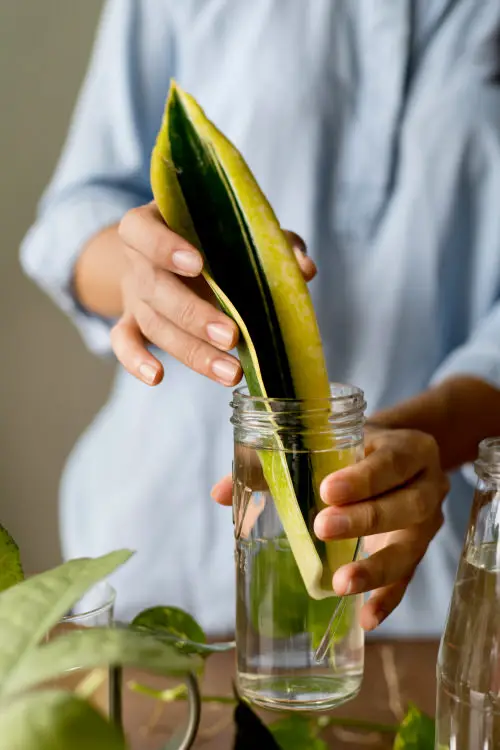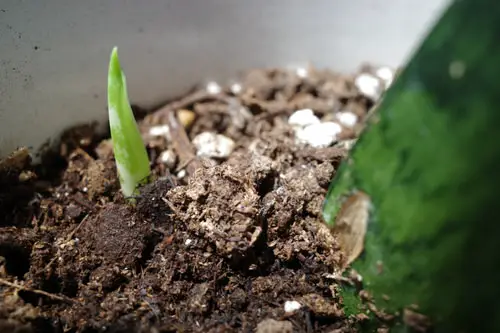If you want to know about the easiest Ways to Propagate Snake Plants, then we have the top 4 ones that you can use to multiply them with ease!

Dracaena trifasciata roots easily in soil or water, making it one of the most versatile plants you can grow easily in the home. Let’s have a look at the different Ways to Propagate Snake Plants.
Learn how to grow Snake plants in the water here
Ways to Propagate Snake Plants
The ideal time to propagate the snake plant is during summer and spring when it is actively growing.
1. By Division
1shutterstock/pundapanda
Dividing a snake plant means breaking up the plant into parts and multiplying the divisions.
- Gently remove the whole plant from its container.
- Use clean and sharp pruners or a knife to cut apart the root ball.
- Make sure that each division has roots and leaves intact.
- Plant each division in a new pot filled with a well-draining growing medium.
- Moisten the soil, and keep that at a spot that receives bright, indirect sunlight.
- Water only when the top 2-4 inches feel dry to the touch.
- The division will show growth in 4-6 weeks.
Check out other houseplants to grow from division here
2. From Pups

- Gently dig around the mother plant to separate the pup, remove it from the pot without damaging the roots and leaves.
- Plant it in a clean container with fresh succulent potting mix.
- Keep the container in a location that gets bright and indirect sunlight.
- Water the soil when the top 1-2 inches feel dry to touch.
- The pup will grow into a sizeable individual snake plant in 8-12 weeks.
- Watch this video for the complete process.
Follow these tips to grow more pups of your succulents
3. From Leaf Cutting

- Use a knife or shears to cut the leaf horizontally from the plant’s base at a 45-degree angle.
- Let the leaves form callus by keeping them in a dark spot for 4-7 days, depending on the weather.
- Plant the cuttings in a well-draining potting mix.
- Water well and keep the leaves in a location that receives bright and indirect sunlight.
- After 60-65 days, gently try to pull cuttings out of the soil. If you can feel a little resistance, it indicates that the roots have been established.
Learn how to grow unlimited Snake plants from leaves here
4. From Seeds

- Growing snake plants from seeds is a very time-consuming process.
- If you still want to do this–fill a container with cactus soil or use a seed starting mix.
- Sprinkle seeds on the growing medium and use your fingers to push them into the soil gently. Cover them with a thin layer of growing medium.
- Water well and place the container in a warm spot with indirect light.
- Use plastic wrap to create a plastic dome and cover the container to hold on to humidity and warmth.
- When you begin to see the signs of growth, remove the plastic wrap.
- Once the seedling reaches a height of 3-5 inches, you can re-pot them.
Check out the most unique Snake plant varieties here
How to Re-pot Snake Plant Cuttings
- Ensure the container you plan to use is clean and has a drainage hole at the bottom.
- Use a soil mix suitable for cacti and succulents. You can also check out these homemade recipes.
- For 1 week after the transplant, place the container in a spot that gets bright and indirect light. Do not expose the plant to direct sun.
- Do not fertilize for 4-6 weeks. It gives the roots enough time to re-establish in the new space.
- Never over-moisten the growing medium and water only when the topsoil feels dry to the touch.



Welcome your guidance for develop home gardens